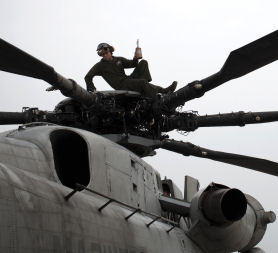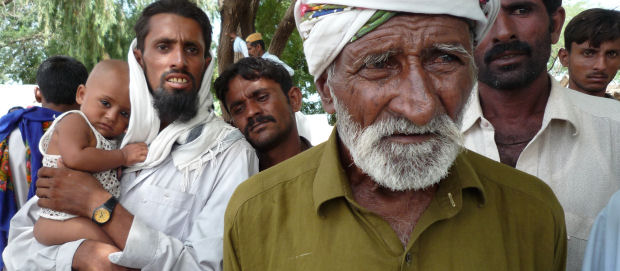Nato attack launched on Pakistan border
NATO helicopters based in Afghanistan launch an attack against insurgents inside Pakistani territory – the second incursion within four days, writes Foreign Affairs Correspondent Jonathan Miller.

Channel 4 News has learned from sources in the Federally Administered Tribal Agency of Kurram that two NATO attack helicopters fired on a vehicle returning from Khost Province in Afghanistan, reportedly killing six Islamist militants. The insurgents are understood to have attacked foreign forces in Khost.
It is unclear whether the helicopters used belonged to the US military. But there is no dispute that the incident happened inside Pakistan. The attack happened at 0500 hours, local time, on Monday.
According to reports, last Friday US attack helicopters killed 30 people inside Pakistan during what is described as a “hot pursuit” mission.
The International Security Assistance Force (ISAF) in neighbouring Afghanistan confirmed that the helicopters attacked Islamist fighters, allegedly belonging to the Haqqani militant network, inside Pakistan following an insurgent assault on an ISAF combat outpost in eastern Afghanistan.
Drone attacks
Channel 4 sources in North Waziristan claimed the militants had been killed by US forces inside Afghanistan and their bodies brought back to Pakistan to the district capital, Miramshah. The demarcation of the frontier is unclear in this area and is disputed.
The latest reported cross-border incursion follows 15 reported attacks by US drones in the same Pakistani tribal region province of North Waziristan in September alone.
Hellfire missiles fired by the drones are thought to have killed at least 150 people so far this month, a security source told Channel 4 News. A source in North Waziristan said there were 18 such attacks in September and 62 so far in 2010. Ten alleged militants were killed on Sunday in drone strikes on the Pakistan side of the border.
These attacks fuel growing resentment against the United States in Pakistan.
Hellfire missiles fired by the drones are thought to have killed at least 150 people so far this month.
They follow nationwide anti-American protests on Friday following the sentencing in the US of Dr Afia Siddiqui, a female Pakistani neuroscientist, charged with attempting to kill US soldiers and federal agents in Afghanistan. She was sentenced to 86 years in jail.
The Pakistani newspaper, Dawn, quoted diplomatic sources in Washington DC on Monday as saying that the attack helicopters were American.
In an unusual development, an ISAF official in Kabul, Master Sergeant Matthew Summers confirmed the attack took place inside Pakistan. He said the pursuit had complied with “proper rules of engagement under inherent right of self-defence.”
American officials are quoted by Dawn as saying that US and Pakistani officials have agreed to a set of rules for hot pursuit which say that US forces must be engaged with insurgents when they cross into Pakistani airspace

In pictures: Pakistan flood victims
View Jonathan Miller's pictures from his visit to flood-hit Pakistan.
Flood relief and resentment
The US drone and helicopter attacks in North Waziristan have continued relentlessly in the past two months, in parallel to US aid airdrops to Pakistan flood victims in neighbouring provinces.
The aid and relief missions operated by US Marines – which Channel 4 News has filmed in both the northern Swat Valley and in the southern province of Sindh – are calculated to extend a hand of good will towards Pakistanis who harbour deep-seated and increasing hostility towards US military operations in their country.
Popular opinion in parts of Pakistan suggests that US efforts to win hearts and minds through humanitarian missions is being undone by its military operations on Pakistan’s western border.
Last week Channel 4 News reported from freshly flooded areas in western Sindh, adjacent to the province of Baluchistan, from where some US drones reportedly fly.
An elderly woman stranded by flood-water in a remote village initially mistook us for Americans and said: “Now you know where we live, please don’t bomb us.”
The US military maintains that its strikes are targeted and result in few civilian casualties. But as in neighbouring Afghanistan, civilian collateral has in the past backfired on public opinion.
In September 2008, four US helicopters attacked alleged militants inside Pakistan, raiding a village in South Waziristan and killing 15 people, including women and children, an eye-witness said at the time.
It was the first such incursion by US Special Forces. Pakistani officials also said at the time that some of those killed in that incident were civilians. The killings triggered protests against perceived foreign aggression.
-
Latest news
-
Windrush scandal: returning to the UK after a forty year wait6m

-
Netanyahu ‘survival’ depends on ‘expanding war’ says head of Palestinian National Initiative5m

-
Proposed law change could strip parental rights from paedophiles5m

-
Hugh Grant settles privacy lawsuit against The Sun newspaper publisher2m

-
Post Office Scandal: what did top executive know?6m

-




